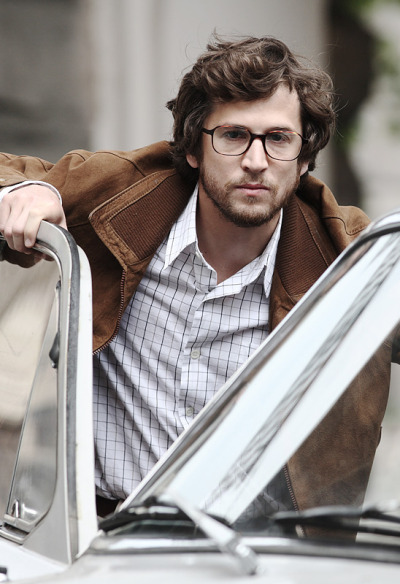CREATIVE STRUCTURES
The Magic Mountain Hotel
Location: Huilo Huilo, Chile
The Magic Mountain Hotel in located in Huilo Huilo, a private Natural
Reserve in the Los Rios region of Chile. The antique appearance ends
with the exterior however, as the interiors are done up in luxury. There
are only 9 rooms, named after bird species found in the area. Each of
them overlooks the thick forest and wildlife outside, including toucans,
iguanas, pumas and lizards. Guests even get a glimpse of a real-life
volcano from the hotel – the enormous Arenal Volcano. Outside the rooms
the special services provided to guests are definitely worth a mention.
Hot tubs made out of huge tree trunks, overlooking the forest are a
major tourist attraction at Magic Mountain, as is the world’s longest
zip line running through the grounds.
Location: Cappadocia, Turkey
A trip to Cappadocia, in central Turkey, gives you the chance for a
unique lodging experience: staying in a cave. The soft volcanic rock has
been hollowed out for homes for at least two millennia.
Recently,
Cappadocia's enterprising hoteliers—led by Mr Süha Ersöz of Ürgüp's
Esbelli Evi—have restored crumbling stone-and-cave houses, equipped the
rooms with comforts such as electricity, modern bathrooms, telephones,
and even fast Internet connections, and opened them as traditional
Cappadocian inns.
MARINA BAY SANDS
SINGAPORE
Marina Bay Sands is an integrated resort fronting Marina Bay in
Singapore. Developed by Las Vegas Sands, it is billed as the world's
most expensive standalone casino property at S$8 billion, including cost
of the prime land. With the casino complete, the resort features a
2,561-room hotel, a 1,300,000-square-foot (120,000 m2)
convention-exhibition centre, the 800,000-square-foot (74,000 m2) The
Shoppes at Marina Bay Sands mall, a museum, two large theatres, seven
"celebrity chef" restaurants, two floating Crystal Pavilions, an ice
skating rink, and the world's largest atrium casino with 500 tables and
1,600 slot machines. The complex is topped by a 340m-long SkyPark with a
capacity of 3,900 people and a 150m infinity swimming pool, set on top
of the world's largest public cantilevered platform, which overhangs the
north tower by 67m. The 20-hectare resort was designed by Moshe Safdie
Architects. The local architect of record was Aedas Singapore, and
engineering was provided by Arup and Parsons Brinkerhoff (MEP). The main
contractor was Ssangyong Engineering and Construction.

Upside Down House
This Upside Down House in Poland is built by Daniel Czapiewski, Polish
businessman in tiny Polish village of Szymbark. Usually, his company
builds homes in 3 weeks but this one took 114 days because the workers
were confused with structural design. Its an artistic statement about
current state of the world.
Apart from this the builders lavished
attention on every last detail & after the construction of the house
they decorated & fitted it out to the highest specifications.
Kizhi Pogost:
300 Years Old Multi-Dome Church Built Without Nails:
Kizhi is a narrow strip of island on Lake Onega in the Republic of
Karelia, Russia. The island is popular for dozens of historical wooden
buildings that were moved to the island from various parts of Karelia
for preservation purposes during the 1950s. Today, the entire island and
the nearby area form a national open-air museum with more than 80
historical wooden structures. The most famous among them is the Kizhi
Pogost.
The Kizhi Pogost enclosure holds two wooden churches and an octagonal
bell tower built during the 18th-century. The jewel of its architecture
is the 22-domed Transfiguration Church with a large iconostasis—a wooden
screen covered with religious portraits. This massive church is about
37 meters tall and made entirely of wood making it one of the tallest
log structures in the world.
The Church of the Transfiguration was laid in June, 1714, after the old
one was burnt by lightning. Its major basic structural unit is a round
log of Scots Pine about 30 cm in diameter and 3 to 5 meters long. Many
thousands of logs were brought for construction from the mainland, a
complex logistical task in that time. A legend tells that the main
builder used one axe for the whole construction, which he threw into the
lake upon completion with the words "there was not and will be not
another one to match it". According to the Russian carpentry traditions
of that time, the Transfiguration Church was without using a single
nail. All structures were made of scribe-fitted horizontal logs, with
interlocking corners joinery.
The basis of the structure is an octahedral frame with four two-stage
side attachments called "prirub". The eastern prirub has a pentagonal
shape and contains the altar. Two smaller octagons of similar shape are
mounted on top of the main octagon. The structure is covered in 22 domes
of different size and shape, which run from the top to the sides. The
roofs were made of spruce planks and the domes are covered in aspen. The
design of this elaborate superstructure also provided an efficient
system of ventilation to preserve the structure from decay.
The Church of the Transfiguration was intended for use only during the
summer as the church has no heating, and winter in Russia is terribly
bitter. It was not uncommon in Russia to have paired churches, for
summer and winter. At the Kizhi pogost, the adjoining winter Church of
the Intercession was built in 1764, providing an admirable visual
complement to the ensemble. Whereas the Transfiguration Church soars,
the Intercession Church with 9 domes accentuates the horizontal, with an
extended refectory.
In the 19th century, the churches was decorated with batten and some
parts were covered with steel. Some of the original iconostasis was also
replaced and lost. It was restored to its original design in the 1950s.
Tiger’s Nest Monastery - Bhutan
Some Amazing Facts
Tiger’s Nest Monastery, perched precariously on the edge of a
3,000-feet-high cliff in Paro Valley, is one of the holiest places in
Bhutan. Legend has it that Guru Rinpoche [wiki], the second Buddha, flew
onto the cliff on the back of a tigress, and then meditated in a cave
which now exists within the monastery walls.
The monastery, formally called Taktshang Goemba, was built in 1692 and
reconstructed in 1998 after a fire. Now, the monastery is restricted to
practicing Buddhists on religious retreats and is off-limits to ordinary
tourists
The Floating Mosque
Corniche, Jeddah
Optical illusion:
Skeleton Transparent Building!
The magic in this picture, is that the building and photo are both real,
but somehow give you the impression you are seeing transparent skeleton
of the building only.
The windows are placed in such way to give
reflection of the opposite side of the building, thus making it look so
real.
Bubble Hotel Rooms
Location: Roubaix, France
The French town of Roubaix, has recently opened a series of portable
hotel rooms in a local park. They can be rented by people who want to
feel close to nature in the middle of the urban jungle.





























